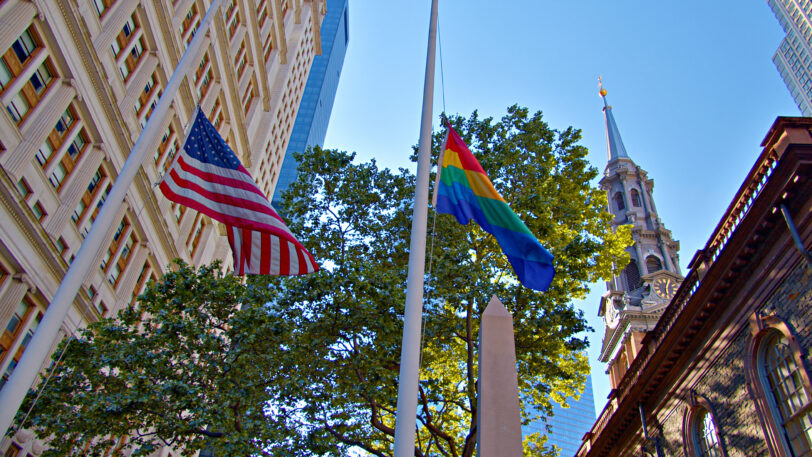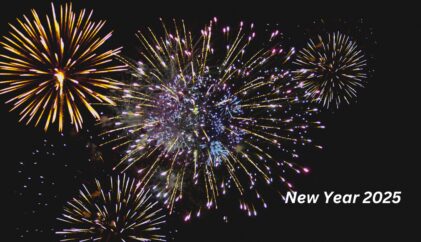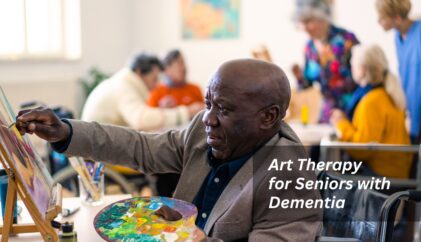
Preserving and interpreting LGBTQAI+ past is an important part of building communities and mutual support.
LGBTQAI+ Historical Landmarks
As our world becomes more accepting of broader and more diverse identities, it is important to have a better understanding of LGBTQ+ community, the history and become an ally of support.
There was a time, in the not so distant past, where the LGBTQAI+ community could not meet openly in public places. Trailblazers like Harvey Milk, Pauli Murray, and many others put up the fight for social justice. Below you will find a list of LGBTQ history sites across the United States—from private residences, hotels, bars, and government agencies to hospitals, parks, and community centers. From the mujerado of the Acoma and Laguna tribes to the drag queens of the Stonewall riots, discover their stories in our nation’s parks, homes, and historic sites.
To celebrate the LGBTQAI+ community’s history and PRIDE, let’s take a look.
Castro Camera
The Castro District of San Francisco, California
Harvey Milk, the first openly gay elected official in California. From 1972 and until his assassination in 1977, Milk owned Castro Camera — a camera store in the Castro District of San Francisco. This location ultimately became the center of the neighborhood’s growing gay community and the campaign headquarters for his various runs for office.
Edificio Comunidad de Orgullo Gay de Puerto Rico
(The Gay Pride Community Building)
Río Piedras Pueblo (downtown Río Piedras) in San Juan, Puerto Rico
Founded in 1974, Comunidad de Orgullo Gay was the first organized attempt to confront social, political and legal discrimination against the local LGBTQ community. Inspired by the 1969’s Stonewall Revolt, Comunidad de Orgullo Gay pioneered resistance against discrimination through political action, educational programs, public exposition and confrontation, and social support to the local LGBTQ community. Although the Comunidad Orgullo Gay movement was disbanded in 1976, “Casa Orgullo” is an exceptionally significant place having housed the organization that spearheaded the gay liberation movement in Puerto Rico.
The Black Cat Tavern
Los Angeles, California
A popular gay bar in Los Angeles known for being one of the first places to house the riots protesting police harassment of LGBTQ people — taking place two years before the famed Stonewall riots. The raid and subsequent protests inspired publication of The Advocate, which began as a newspaper for the group PRIDE. The January 1967 raid on the Black Cat Tavern and the August 1968 raid on The Patch together inspired the formation of the Metropolitan Community Church (led by Pastor Troy Perry).
Henry Gerber House
Chicago, Illinois
The Henry Gerber House is nationally significant for its association with the founding of the first chartered organization in the United States dedicated to advocating for the rights of homosexuals. Henry Gerber lived in the house at 1710 North Crilly Court from 1924 until 1925 as a tenant when he founded the Society for Human Rights (SHR), an organization advocating for the civil rights of homosexuals, and the first gay rights society in the United States.
Stonewall Inn
Manhattan, New York
Serving as the site of the Stonewall Riots in 1969, the Stonewall Inn was originally constructed in the 1840s as stables.Then, in 1966, the then-nightclub and restaurant favored by the LGBTQ community was purchased by members of the mafia and turned into a gay bar. Until the riots in 1969, the bar was an intimate escape for members of the LGBTQ community, though it was an establishment frequently raided by police.
The Selling Building
Portland, Oregon
The building was added to the National Register of Historic Places in 1991 for its historic and architectural significance. Early tenants of the building were physicians and dentists including psychologist J. Allen Gilbert who, in 1917, treated Dr. Alan Hart (nee Alberta Lucille Hart) for sexual inversion. Despite categorizing Hart's condition as pathological and abnormal, Dr. Gilbert eventually supported Hart's transition, including their choice to undergo a hysterectomy and adopt male attire.
First Unitarian Church of Denver
Denver, Colorado
Hosted one of the modern world’s first same-sex weddings in 1975 after a defiant county clerk issued a marriage license to a gay couple. But local officials refused to recognize the union until 2016.
Pulse Interim Memorial
Orlando, Florida
Three years ago, the Pulse nightclub was the site of a mass shooting, considered the deadliest targeted murder in LGBTQ history, Springate says. Ultimately, the violence claimed 49 lives. The nightclub site now has a temporary memorial, with plans to build a permanent monument and museum.
Elks Athletic Club
Louisville, Kentucky
New research has determined that the building is also significant as the location of the Beaux Arts Cocktail Lounge, which became a popular hangout for gay men during its eight years of operation. Beginning in 1948, advertisements published in the Louisville Courier-Journal daily newspaper employed the word “gay” in a manner that would have been well understood in LGTBQ subcultures but not among heterosexuals.
Matthew Shepard Memorial Bench
Laramie, Wyoming
The horrific murder of Matthew Shepard shocked the nation and a decade after his death, the University of Wyoming put a bench in Quealy Plaza to celebrate his life. Shepard’s brutal death inspired an award-winning play and tougher legislation for crimes committed on the basis of sexual orientation.
Julius' Bar
New York City, NY
Now the oldest gay bar in New York City (and also one of the oldest bars in the city in continuous operation), is a bar and restaurant that dates back to the nineteenth century. By the 1960s, Julius’ began attracting gay men, although it was not exclusively a gay bar. On April 21, 1966, members of the Mattachine Society, an early gay rights group, organized what became known as the “Sip-In.” Their intent was to challenge New York State Liquor Authority (SLA) regulations that were promulgated so that bars could not serve drinks to known or suspected gay men or lesbians.
Darcelle XV Showplace
Portland, Oregon
Showplace is one of only two known drag clubs open prior to 1970 in the United States. The club is deeply associated with its owner, Walter Cole/Darcelle, who, at 89 years old, holds the Guinness World Record as the World’s Oldest Performing Drag Queen. Darcelle XV, the founder and namesake of the showplace, died of natural causes at the age of 92 in March 2023.
John Fryer Historic Marker
Philadelphia, Pennsylvania
This historical marker at 13th and Locust commemorates local psychiatrist and gay activist Dr. John Fryer. In 1973, the Temple University professor fought for the American Psychiatric Association to stop considering homosexuality a mental illness.
Gayborhood
Philadelphia, Pennsylvania
The Gayborhood, an area of Center City bound by 11th, Broad, Pine, and Walnut Streets, got its name in 1997 during Outfest, a big festival that celebrates National Coming Out Day and continues to take place each October in the same location. There are 36 rainbow street signs in this vicinity, as well as the rainbow crosswalk at 13th and Locust that commemorates the neighborhood’s LGBTQ history and community.
Boystown
Chicago, Illinois
The Boystown section of Lakeview holds the distinction of being the nation's first officially recognized gay village. It is now home to Center on Halsted, an LGBTIQ+ community center that hosts an array of public programs open to the public that provide fun, educational and enlightening opportunities for members of the LGBTIQ+ community and allies.



